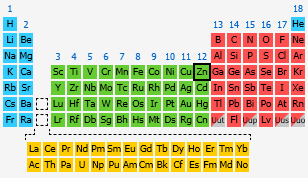Question #a47b4
1 Answer
Two electrons.
Explanation:
As you know, the principal quantum number,
#n + l = 2#
The angular momentum quantum number depends on the principal quantum number as follows
#l = 0, 1, ..., n-1#
You know that zinc,
#n = {1, 2, 3, 4}#

This means that you can have
#n + l = 2 " "-> " "color(red)(cancel(color(black)(n = 1 implies l= 1)))# Not possible because
#l# cannot be equal to#n# .
#n +l = 2" " -> " " n = 2 implies l = 0" " " "color(green)(sqrt())# These electrons will be located on the second energy level, in the
#s# subshell.
#n + l = 2 " "-> " "color(red)(cancel(color(black)(n = 3 implies l= -1)))# Not possible because
#l# cannot have a negative value.
#n + l = 2 " "-> " "color(red)(cancel(color(black)(n = 4 implies l= -2)))# Not possible because
#l# cannot have a negative value.
Now, the number of values that the magnetic quantum number,
#m_l = {-l, -(l-1), ..., -1, 0, 1, ..., l-1, l}#
You will have
#l = 0 implies m_l = 0# A single orbital is located in the
#s# subshell.
As you know, each orbital can hold a maximum of
This implies that the total number of electrons that can have
#1 color(red)(cancel(color(black)("orbital"))) * "2 e"^(-)/(1color(red)(cancel(color(black)("orbital")))) = color(darkgreen)(ul(color(black)("2 e"^(-))))#
Both electrons will be located in the
#n = 2, l= 0, m_l = 0, m_s = +1/2#
#n = 2, l = 0, m_l = 0, m_s = -1/2#

